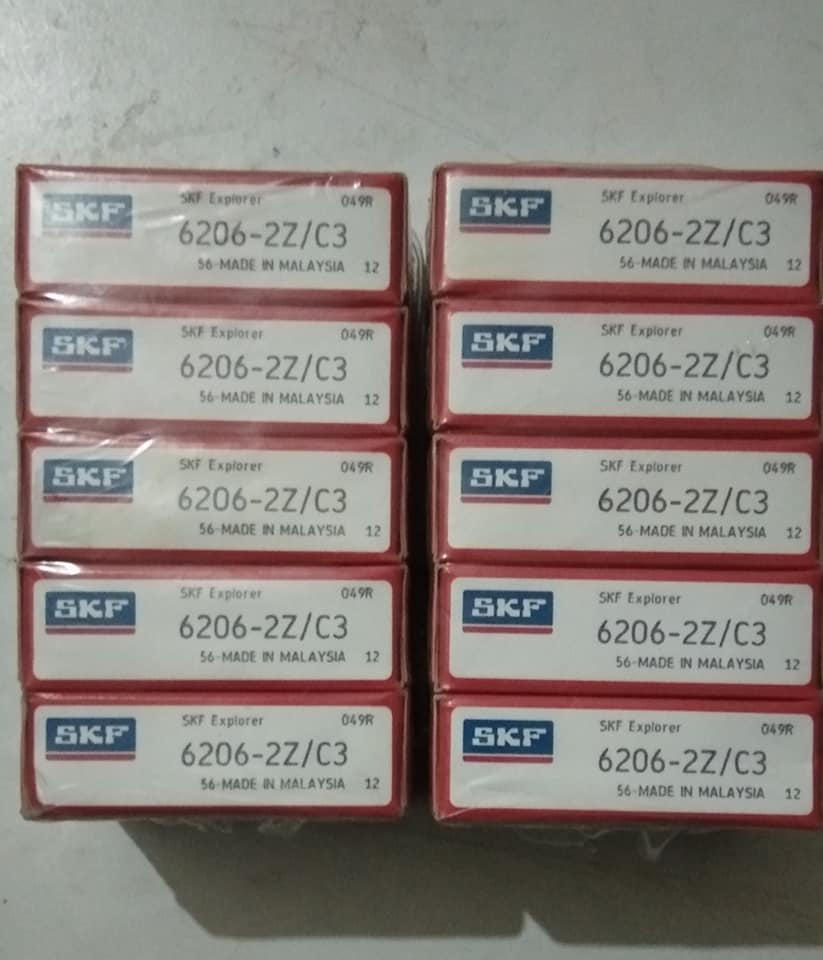
 News
NewsFirst, what is bearing preloading?
The pre-tightening of rolling bearings refers to the initial pressure and pre-deformation generated between the rolling body of the bearing and the inner and outer rings during the installation of the bearing, so as to keep the inner and outer rings of the bearing in the state of compaction and make the bearing run under the working load and in the state of negative clearance.
Two, what is the purpose of bearing preloading?
The purpose of bearing preloading is to increase the stiffness of bearings;
The rotation axis is correctly positioned in the axial and radial direction, and the rotation accuracy of the axis is improved.
Reduce the vibration and noise of the shaft, and reduce the sliding of the rolling body relative to the inner and outer ring raceway caused by the moment of inertia;
Compensation for changes in bearing internal clearance caused by wear;
Prolong bearing life.
Click here for more details about SKF 6206-2Z/C3.

Three, what are the directions of bearing preloading?
According to the direction of preload, bearings can be divided into axial preload and radial preload. In practical application, axial preload is used for ball bearings and radial preload is used for cylindrical roller bearings.
When two angular contact ball bearings or tapered roller bearings of the same type are installed in pairs, according to the method of applying preload, the axial preload is divided into positioning preload and constant pressure preload.
1, Positioning pre tight
Positioning preload refers to an axial preload mode in which the axial position of the bearing remains unchanged during use. A certain amount of preload can be obtained by adjusting the width of the spacer between the two bearings.
The preload is too small to reach the purpose of preload, but the preload is too large, the stiffness of the bearing can not be significantly improved, but the friction in the bearing increases, the temperature increases, and the bearing life decreases.
The size of preload should be determined according to the load situation and use requirements.
Generally speaking, under the condition of high speed and light load, or in order to reduce the vibration of the support system and improve the rotation accuracy, the lighter preload is chosen.
In order to increase the stiffness of the supporting system, medium preload and heavy preload are used.
Generally, the size of preload should be determined by calculation and experience.
2. Constant pressure preloading
Constant pressure preloading is a kind of axial preloading method that makes the axial preloading load of the bearing remain constant in use through the spring.
As shown in Figure 3, a certain amount of preload can be obtained by adjusting the amount of spring compression.
Compared with the positioning preload, the constant pressure preload has no significant increase on the axial stiffness of the supporting system under the same preload deformation.
But in the positioning preload, the axial length difference caused by the temperature difference between the shaft and the bearing seat, the radial expansion caused by the temperature difference between the inner and outer ring will affect the preload deformation, while in the constant pressure preload, it is not affected.
Therefore, the pre-loading method must be selected according to the specific technical requirements.
Usually, when high stiffness is required, positioning preload is selected;
In high speed operation, use constant pressure preload.
3. Radial pretightening
The method of making the inner ring of the bearing expand by using the interference fit of the bearing and the journal to eliminate the radial clearance and produce certain pre-deformation is called the radial pre-tightening of the bearing.
Radial preloading can improve the bearing stiffness.
In high-speed cylindrical roller bearings, radial preloading can reduce the sliding phenomenon of rolling body and raceway under the action of centrifugal force.
For bearings with conical inner holes, the relative position of the inner ring and the set sleeve is adjusted by locking nuts to reduce the radial clearance of bearings to achieve radial pretightening.